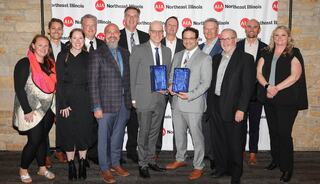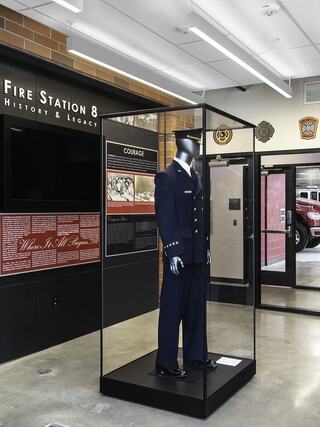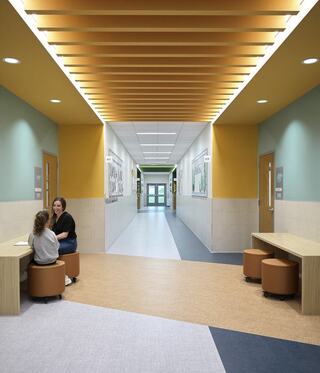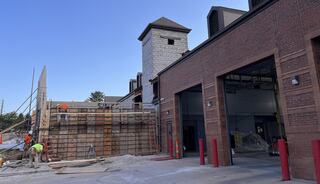
Community and Technical College Students Thrive When Design Centers their Needs
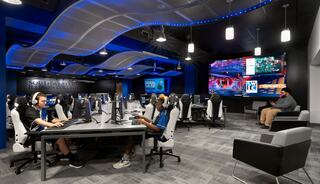
The career and technical education sector fills an important role in our communities: maintaining a workforce with the skills and knowledge for in-demand jobs in the present and future.
FGM Architects (FGMA) has partnered with community and technical colleges to deliver spaces that can create a bridge from high school to college or prepare students for a new job or new skill. This mode of education presents surmountable challenges that effective design can help solve.
Compared with a traditional college campus environment, where students are likely to live on campus for a period of time and spend multiple years as part of a student cohort, workforce training students are more transitory and typically spend much less time outside of class forming relationships with their fellow students.
"Creating a feeling of community for these students and fostering a sense of belonging can have a major impact on student success."
Traditional student enrollment is facing the so-called “demographic cliff,” the term given to describe a decrease of 18-24 year olds in the United States due to declining birth rates following the Great Recession in 2008. This reduction of the “college-aged” population means that colleges and universities across the U.S. are turning to non-traditional students like adult learners; part-time students; commuters; returning service veterans; and students seeking an advanced degree, a certificate, or other ways of upskilling. The institutions serving these students will face many of the same challenges as campuses or programs focused on workforce development. We’ve seen a renewed focus across all Higher Education clients on designing with empathy, keeping community top of mind, and finding ways to encourage students to stay on campus and form relationships outside of the classroom.
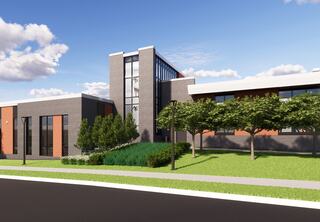
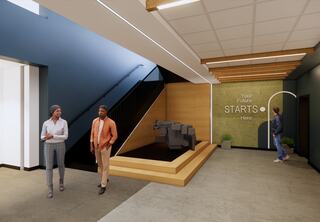
As part of FGMA’s recently designed Transportation Education Center (TEC), we’ve included a group of spaces designed to make it easier for students to both gather and interact with their peers and to disconnect and regroup or focus without leaving campus. Private study rooms allow students to join online classes without leaving the building, study, prep for a job interview, or simply decompress in a vibrant and stimulating learning environment. A community pantry, open gathering spaces and outdoor seating encourage students to interact and form lasting connections.
Workforce projects often present some of the best opportunities to put learning on display. Many of our projects embrace transparency with views into labs and classrooms that make for a rich and interesting interior environment. Glimpses into spaces that support hands-on learning with specialized equipment allow us to highlight the work and activity taking place. The TEC project includes overhead doors that connect classroom space to a workshop and lab space, and the classrooms themselves include car lifts and diagnostic equipment to support a lecture-to-lab approach to learning. Social gathering spaces are positioned with views into interactive learning spaces, while quiet focus spaces offer an introspective environment free from distraction.
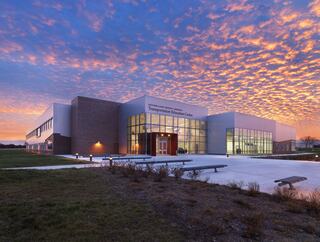
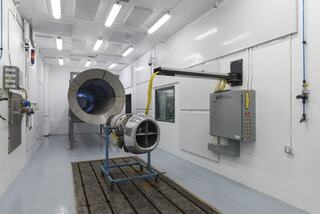
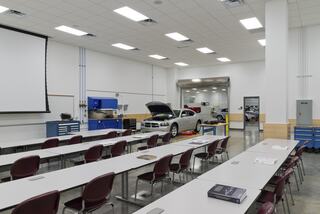
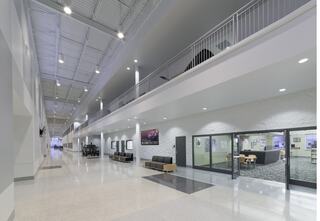
Esports design centers belonging and connectedness
Varsity and intramural sports offer students a way to participate in a team-based activity. While FGMA has designed sports and recreation spaces for many communities and campuses, we’re now seeing a surge in demand for esports venues. We’ve recently completed designs for Southwestern Illinois College and St. Louis Community College to add esports to their campuses. Esports is inherently inclusive, allowing and supporting participation across social groups, physical abilities and genders. It provides students with the same social and emotional learning benefits as traditional athletics: leadership and team building skills and an improved sense of belonging. As many as 80% of student esports players have never participated in an extracurricular activity before.
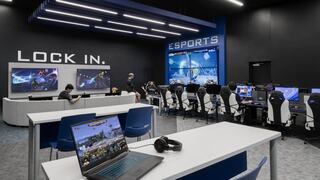
In all educational settings, FGMA strives to build community. Opportunities for communication, social and emotional growth, improved learning outcomes, and higher rates of student persistence are all improved when we design projects that support individual wellness, heads-down focus space, group interactions, social gathering, collaborative study and team building.
FGMA has a been a trusted design partner for educators who serve a broad spectrum of learners. We design community and private schools for PK-12 students and teachers, work with college and university clients to improve learning, research and student life for their campus communities, and we’ve seen exciting growth, particularly in workforce education. We're thrilled to some of the lessons we’ve learned on these projects and how they might apply to other educational settings.
For more information, contact FGMA Vice President and Design Principal Cory Kamholz, AIA, LEED AP : corykamholz@fgmarchitects.com
News & Insights
All Articles
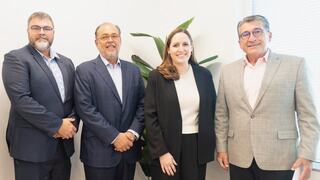
St. Louis PK-12 Leader Emily Spindler Shares Insights on the Future of Ed Spaces
